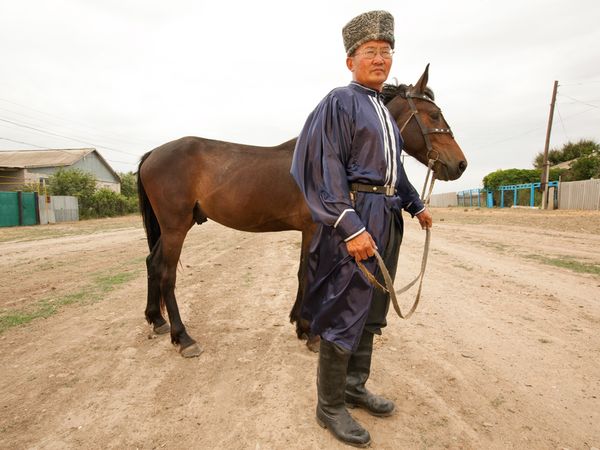Type the name of the breed you're looking for below
[wpdreams_ajaxsearchlite] Don't see the breed your're looking for? Click here and let us know!
Astrakhan horse
| Country Of Origin | Mongolia |
| History and Background | Also called Kalmykskaya and Kalmyk, the Astrakhan is a member of the Mongolian equine group, they are bred in the territory along the Volga and Ural rivers. Sadly, this breed is in danger of becoming extinct. The Kalmyk is considered part of the group of breeds that includes the Mongolian horse. The original foundation bloodstock brought to Russia by the Kalmyks was crossed with other breeds of saddle horse, including the Bashkort, Kazakh horse, Kabardin, Don horse, Anglo-Arab and Orel horse. The Kalmyk people became the major supplier of horses to the Russian cavalry from about the mid-1600s until about 1740. In 1688, the Kalmyks drove 6,400 horses to Moscow for sale, and thereafter, Russian officers traveled to the Volga region to purchase Kalmyk horses. Records from the 1730s indicate that Russian merchants spent over seven thousand rubles a year on Kalmyk horses for Russian dragoon regiments. At its peak, the breed may have reached one million horses, but today is nearly extinct. A census in 1803 found over 238,000. However, no known selective breeding had been done since at least 1943 and by 1986 the breed was considered extinct other than through crossbreds. To resurrect the breed, 522 horses were located that still had characteristics of the original breed, mostly in isolated regions, and four breeding farms were set up in Russia to resurrect and preserve the breed. |
| Use Today | Harness horse, Riding horse, Transportation |
| Height | 14.2 to 15 hands high (57-60 inches, 145-152 centimeters) |
| Colour | Bay and sorrel |
| Characteristics | The Kalmyk is often described as an average-size horse with a fast stride and great tolerance for extreme weather conditions. One of the most outstanding features of the Kalmyk horse is its legs; they have a well-developed and strong croup and well-developed legs with cow-hocked hind legs. The Kalmyk is relatively big. It has a firm and sound conformation that provides it with great stamina, strength and flexibility. It is able to weather extremely severe conditions because of its efficient metabolism, which allows the horse to get fat quickly, and its special coat that thickens during winter. The Kalmyk has a small neck, thick and firm skin, a Roman head, and a short and carp-like back. |
| Personality and Temperament | Kalmyk horses are docile and calm by nature. They are not easily affected by weather conditions, hunger or fatigue. All these traits make the Kalmyk very useful as a harness and riding horse. |
| Other Considerations | The Kalmyk horse can take care of itself. It requires little care, and it can always find food and water for itself. Even so, it has its limits: over-use and abuse of the Kalmyk horse will affect its performance in the long run. |



